13 Lessons On The Viral Content That Got 36,177 Shares In A Year
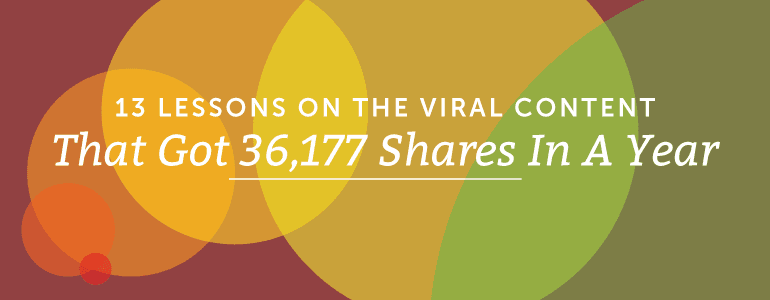 While the idea of creating viral content as a goal sort of makes my eyes roll uncontrollably, this isn’t the first time I’ve written about the subject. So why all the eye-rolling?
You want your content read, discovered, loved/hated, shared, and by as many people as possible, that’s true. And that is sort of what happens with viral content. So what’s my problem with going viral?
Virality, as an end goal, seems wrong.
Your end goal should always be useful, helpful, true, original content.
While the idea of creating viral content as a goal sort of makes my eyes roll uncontrollably, this isn’t the first time I’ve written about the subject. So why all the eye-rolling?
You want your content read, discovered, loved/hated, shared, and by as many people as possible, that’s true. And that is sort of what happens with viral content. So what’s my problem with going viral?
Virality, as an end goal, seems wrong.
Your end goal should always be useful, helpful, true, original content.
13 Lessons On The Viral Content That Got 36,177 Shares In A Year via @JulieNeidlinger
Click To TweetWriting Viral Content
Viral content isn’t nice. I mean, it might not necessarily be insulting or something, but it isn’t forgettable. Nice can be forgettable. “Nice post.” Not viral. But nice. Gregory Ciotti is one of the writers I’ve referenced in previous psychology-based posts, and he has some great thoughts on what kind of content tends to go viral. First, he breaks potential viral content into six categories that are likely to push people’s buttons:- Taboo: Anything not currently seen as acceptable by culture. Specifically, the culture and/or subculture that your audience exists in or adheres to. It might even veer toward the profane (though be careful about turning off your audience).
- Unusual: Anything that exists outside the realm of what your audience expects, either in topic or in quality.
- Outrageous: Anything that exceeds boundaries, including through extravagance. This is different from taboo in that it is just past the borderline of acceptability, and not overtly far beyond. It might be the difference between a post entitled “10 Great Blogging Ideas” and “1,001 Great Blogging Ideas”.
- Hilarious: Anything that makes people laugh, and good. Not chuckle. Not snicker. We’re talking a belly laugh, here. Words, images, concepts—these all work. Find something that your audience identifies with. Mom News Daily, for example, is a Onion-like site that knows its audience’s funny bone very well.
- Remarkable: Anything that is awe-inspiring that drives people to share simply because it deserves attention. This is the kind of content that makes people’s day, causes their jaws to drop, or inspires them to try something themselves.
- Secrets: Anything not readily known by outsiders or non-experts. These are those truly exclusive topics that inquiring minds want to know.
- Pushing for an emotional response as your content goal works well.
- Positive content is better than negative content (though once in a while a fantastic rant will probably slip through the cracks :-)
- Content that is seen as useful in a practical way also fare well.
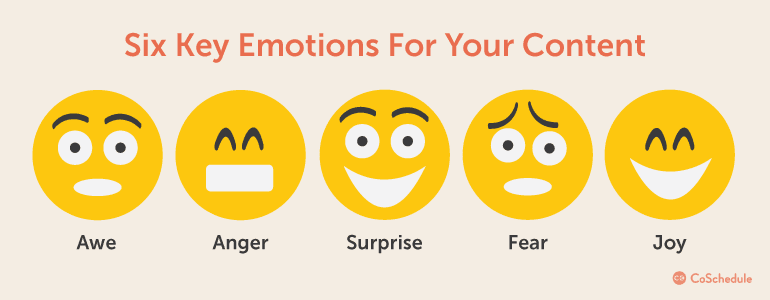 Ciotti lists six key emotions your headlines and content can make a swing toward:
Ciotti lists six key emotions your headlines and content can make a swing toward:
- Awe
- Anger
- Surprise
- Fear
- Joy
- Lust
- Why people share.
- How to write to fit those reasons.
- What to do if they don’t read it.
The 6 elements and 6 emotions of viral content
Click To Tweet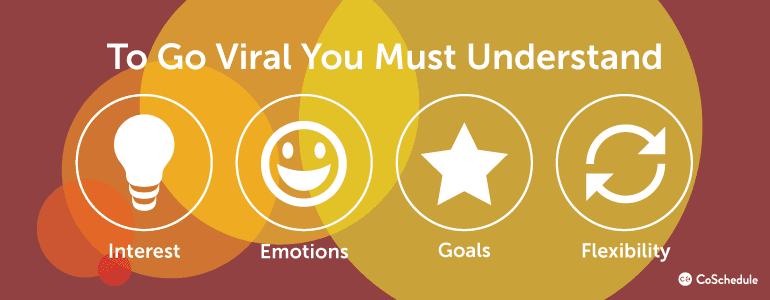 Virality is not predictable. The context of where your content is seen, current events, zeitgeist, who mentions or shares the content—all of these can affect what happens to your content, and many of them are not within your control.
Virality is not predictable. The context of where your content is seen, current events, zeitgeist, who mentions or shares the content—all of these can affect what happens to your content, and many of them are not within your control.
The Experience Of Going Viral
The experience of going viral is great if you’re thinking about the traffic, renown, and analytics results. But there are a few other experiences that will be a part of it, too, and some of it will require a degree of maturity, fortitude, and apathy that I don’t always have.Viral Comments
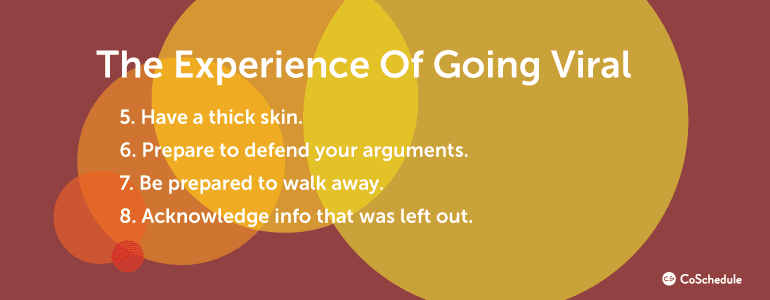 When a rant I wrote on my personal blog went hideously viral, I discovered first hand that with great traffic comes great responsibility. Mainly, the responsibility of self-control, particularly in the comments section. A couple of things happen in the comments section of a viral blog post.
When a rant I wrote on my personal blog went hideously viral, I discovered first hand that with great traffic comes great responsibility. Mainly, the responsibility of self-control, particularly in the comments section. A couple of things happen in the comments section of a viral blog post.
- Dissent and insult, depending on the topic, can be high. Dissent is fantastic, because it opens up all kinds of great conversation and may even give you some new ideas for follow-up blog posts. Insults, though, are less fantastic. You, your intelligence, and your work may be insulted. My advice is unless those insults come from your mom, ignore them.
- Spam or “look at me!” comments can also be high. You’re not the only one who realizes your content is viral and the potential therein. People who see a post getting lots of traction and buzz are going to try to latch onto it and siphon whatever juice they can. They’ll post links to their own content or try to sell their own services in some related way. Some of it is legitimate response, linking back to related or relevant content. Some of it is spam. Maintain the integrity of your comments section and weed out the spam.
Viral Engagement
When a post goes viral, your social media response will explode. Lots of people will be sharing, commenting, and directing conversation toward you. Are you ready to respond to it?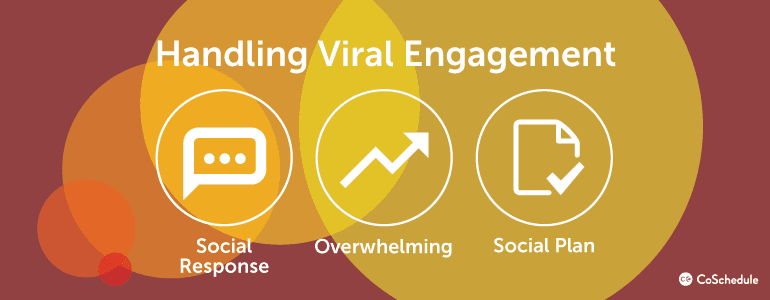 I’ve had several of my CoSchedule posts go viral over on Social Media Today, and the social response has been a bit overwhelming. When you turn your phone on and see hundreds of notifications, you sorta just want to turn your phone off.
Some are merely retweets.
Some are asking questions.
Some are refuting.
Either way, there’s an expectation that you’ll respond. All of that social engagement can take up a significant chunk of time. If you have a dedicated team member responsible for social interaction, it won’t be as difficult, but if you’re a solo blogger, it can be tough. Each person has to develop their own social plan for this situation. On Twitter, for example, you may:
I’ve had several of my CoSchedule posts go viral over on Social Media Today, and the social response has been a bit overwhelming. When you turn your phone on and see hundreds of notifications, you sorta just want to turn your phone off.
Some are merely retweets.
Some are asking questions.
Some are refuting.
Either way, there’s an expectation that you’ll respond. All of that social engagement can take up a significant chunk of time. If you have a dedicated team member responsible for social interaction, it won’t be as difficult, but if you’re a solo blogger, it can be tough. Each person has to develop their own social plan for this situation. On Twitter, for example, you may:
- Thank everyone or no one for their retweet.
- Favorite any tweet that mentions your content.
- Respond only to direct questions or comments.
- Retweet every retweet.
- Pin a tweet to your timeline that says your post has gone viral and you thank everyone for their interest.
The Real-Life Results Of A Viral Post
Here’s the good stuff you want to hear about, those magic numbers and what comes from them. I’m going to use that color psychology post as our example. First, let’s check out some hard data on the post so far.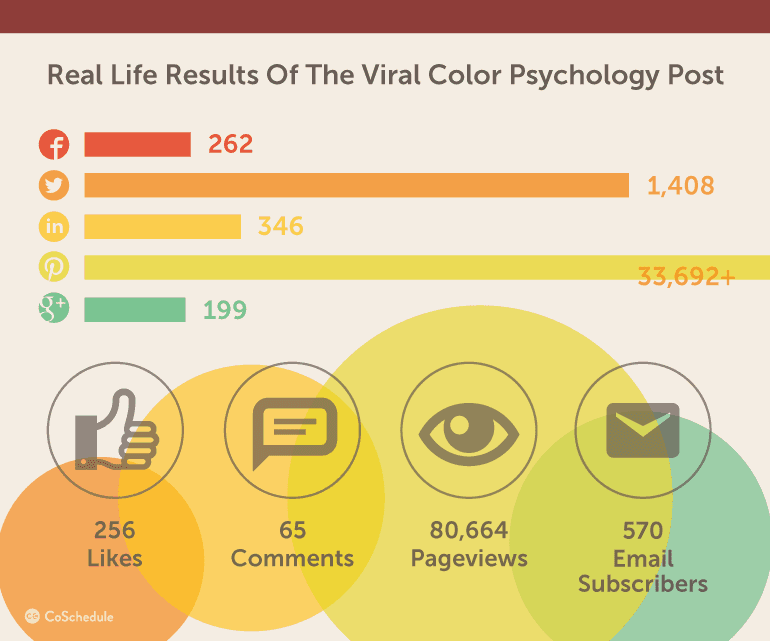 The post was published almost exactly one year ago. In that time it has received 36,000 social media shares:
The post was published almost exactly one year ago. In that time it has received 36,000 social media shares:
- 262: Facebook
- 1,408: Twitter
- 346: LinkedIn
- 33,692: Pinterest
- 199: Google+
- 256 likes
- 65 comments
- 80,664 pageviews
- 570 email subscribers (indicated by number who have downloaded the guide, which requires email access)
Every post idea has potential. Find a way to capture your ideas before they're lost.
Click To TweetViral content is helpful, in-depth, well-illustrated, explanatory, portable.
Click To Tweet13 Lessons On The Viral Content That Got 36,177 Shares In A Year
Click To Tweet

